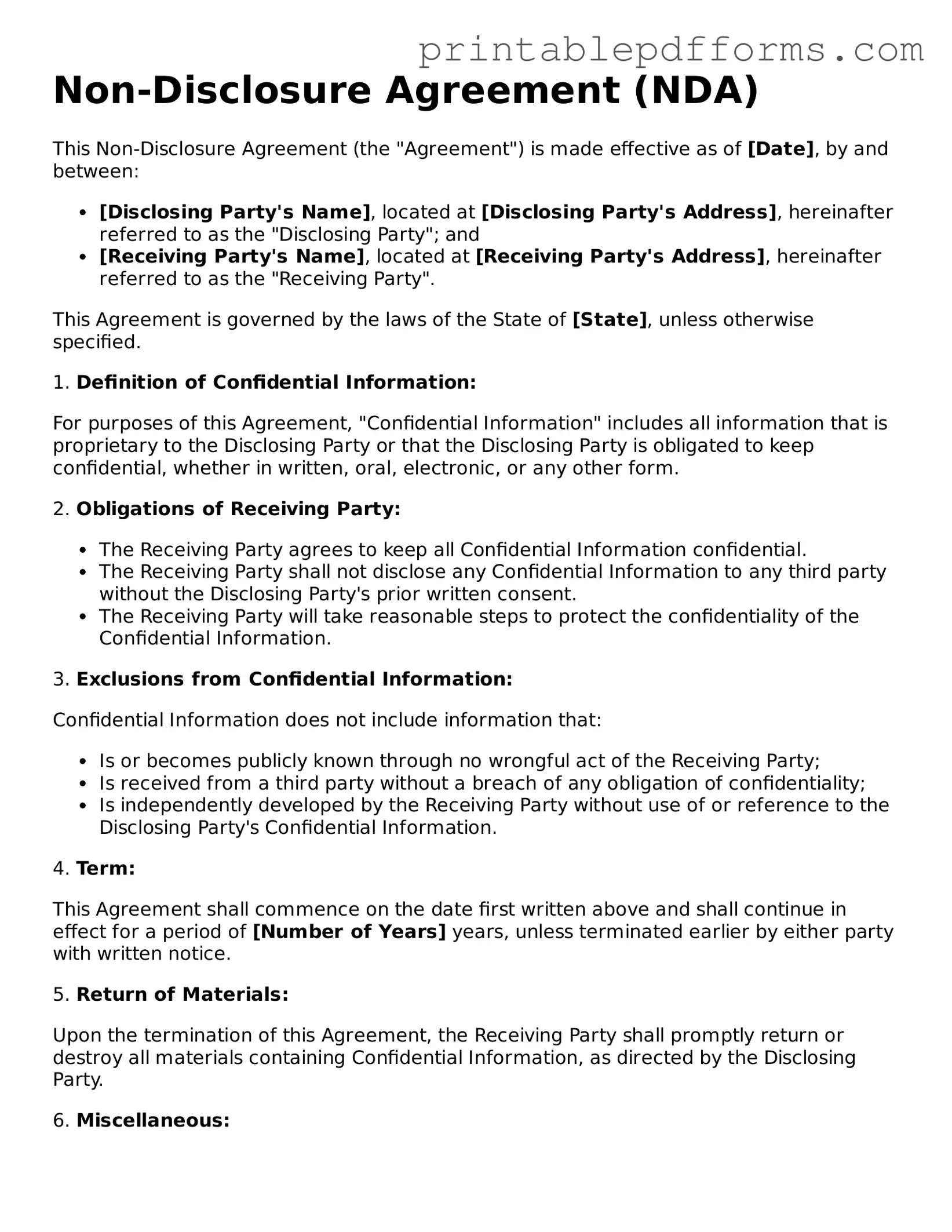Non-Disclosure Agreement (NDA)
This Non-Disclosure Agreement (the "Agreement") is made effective as of [Date], by and between:
- [Disclosing Party's Name], located at [Disclosing Party's Address], hereinafter referred to as the "Disclosing Party"; and
- [Receiving Party's Name], located at [Receiving Party's Address], hereinafter referred to as the "Receiving Party".
This Agreement is governed by the laws of the State of [State], unless otherwise specified.
1. Definition of Confidential Information:
For purposes of this Agreement, "Confidential Information" includes all information that is proprietary to the Disclosing Party or that the Disclosing Party is obligated to keep confidential, whether in written, oral, electronic, or any other form.
2. Obligations of Receiving Party:
- The Receiving Party agrees to keep all Confidential Information confidential.
- The Receiving Party shall not disclose any Confidential Information to any third party without the Disclosing Party's prior written consent.
- The Receiving Party will take reasonable steps to protect the confidentiality of the Confidential Information.
3. Exclusions from Confidential Information:
Confidential Information does not include information that:
- Is or becomes publicly known through no wrongful act of the Receiving Party;
- Is received from a third party without a breach of any obligation of confidentiality;
- Is independently developed by the Receiving Party without use of or reference to the Disclosing Party's Confidential Information.
4. Term:
This Agreement shall commence on the date first written above and shall continue in effect for a period of [Number of Years] years, unless terminated earlier by either party with written notice.
5. Return of Materials:
Upon the termination of this Agreement, the Receiving Party shall promptly return or destroy all materials containing Confidential Information, as directed by the Disclosing Party.
6. Miscellaneous:
- This Agreement constitutes the entire understanding between the parties regarding the subject matter herein.
- This Agreement may only be modified by a written amendment, signed by both parties.
IN WITNESS WHEREOF, the parties have executed this Agreement as of the date first above written.
__________________________________
[Disclosing Party's Name]
Signature: ________________________
Date: ________________
__________________________________
[Receiving Party's Name]
Signature: ________________________
Date: ________________
